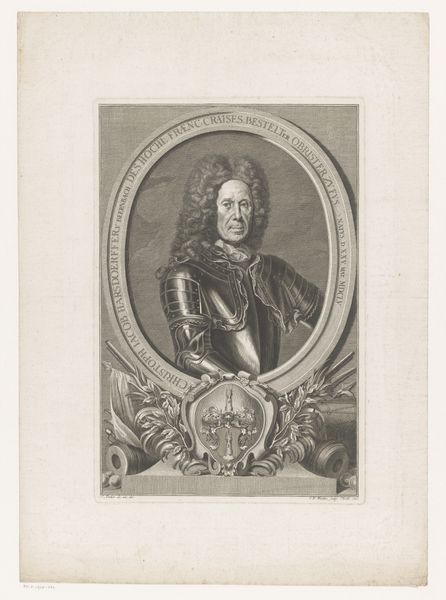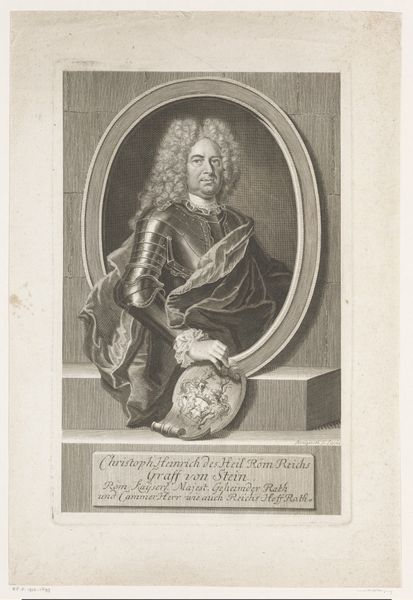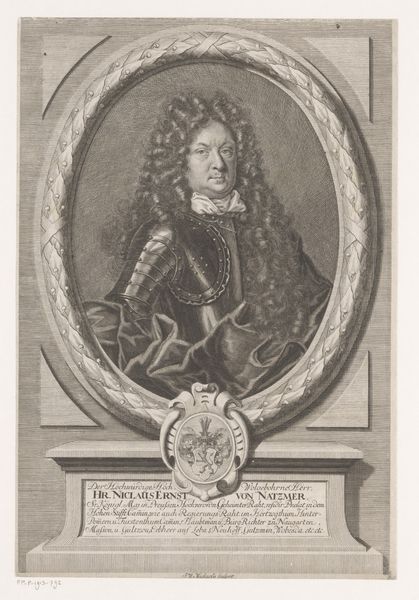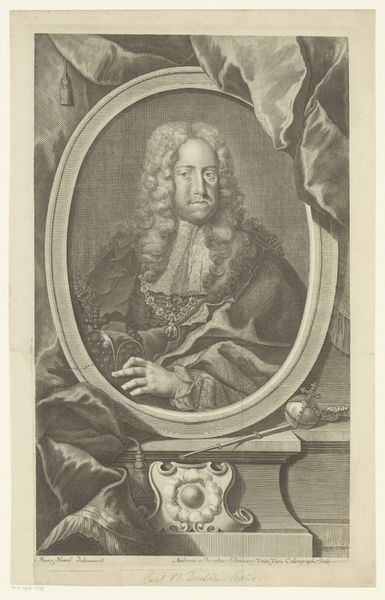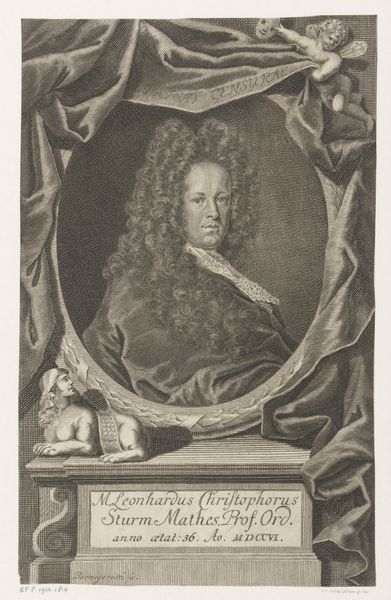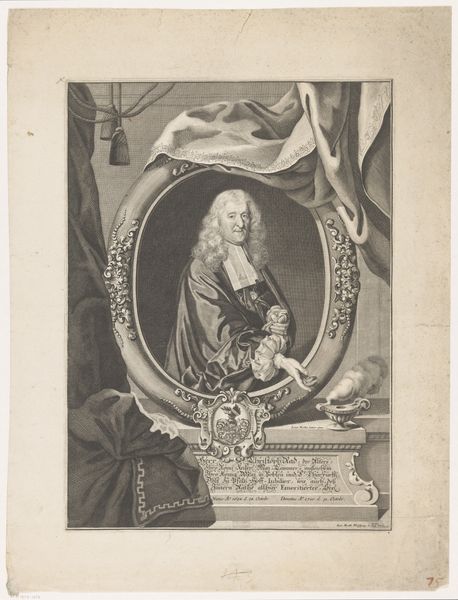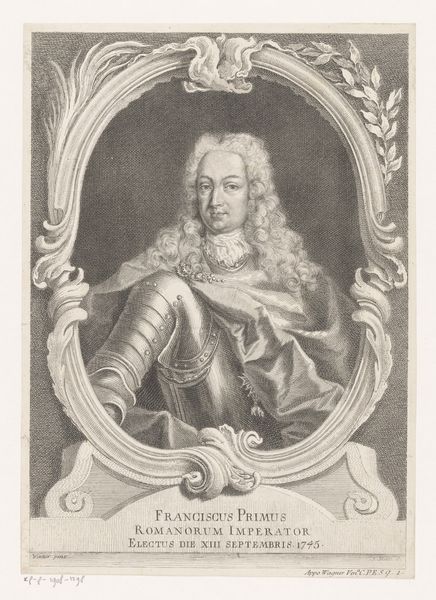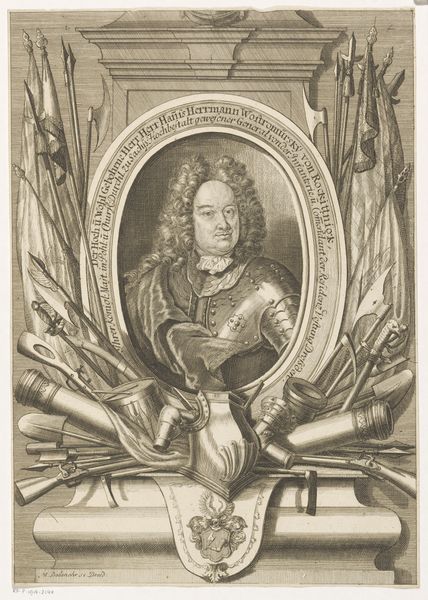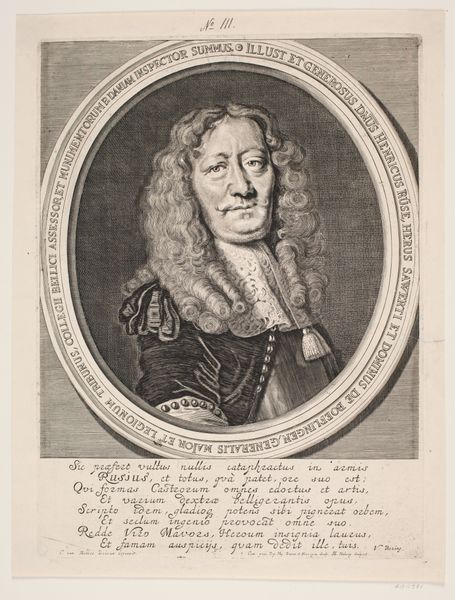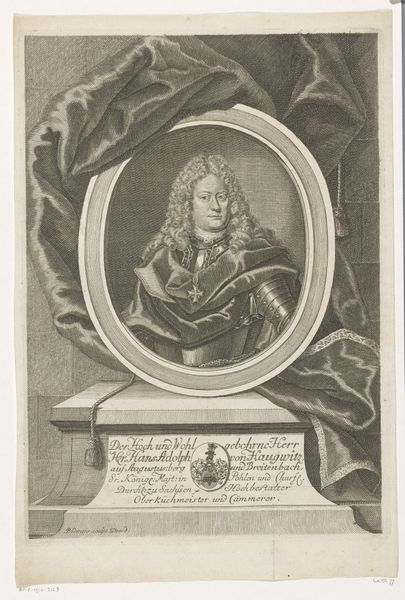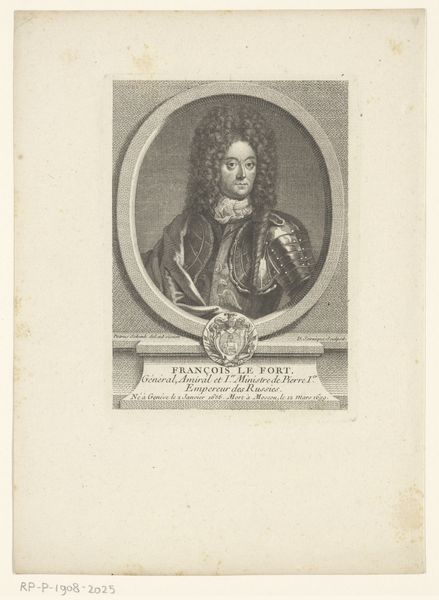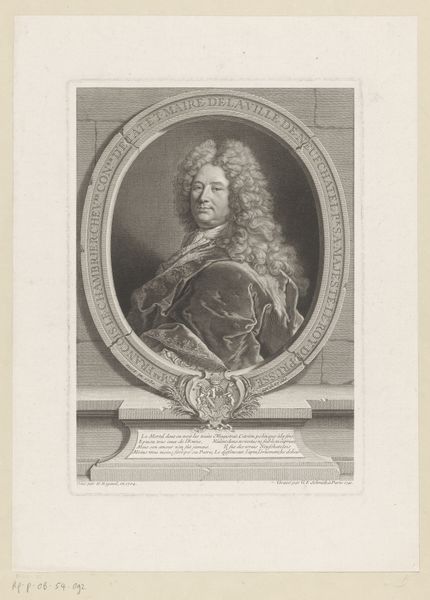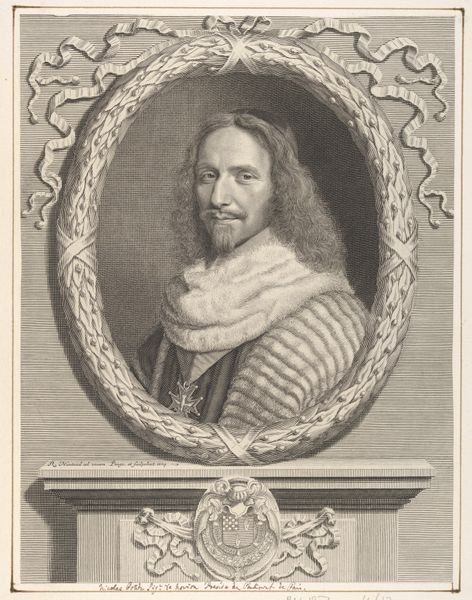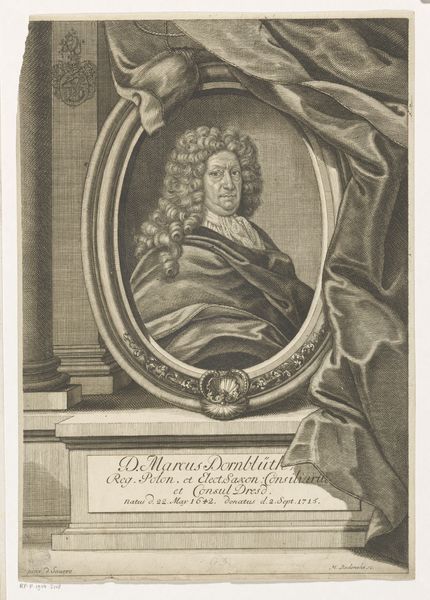
print, engraving
#
portrait
#
pencil drawn
#
baroque
# print
#
pencil sketch
#
old engraving style
#
charcoal drawing
#
historical photography
#
line
#
history-painting
#
engraving
Dimensions: height 322 mm, width 204 mm
Copyright: Rijks Museum: Open Domain
Curator: This is a print depicting Georg Ehrenfried von Nauendorff, made sometime between 1734 and 1767. It is currently held here at the Rijksmuseum. Editor: My initial reaction is that there is an incredible intensity in the eyes, and the composition certainly lends him a majestic air, even a stern one. It gives the impression of someone powerful, maybe a bit unapproachable. Curator: That’s a perceptive reading. Bernigeroth was known for capturing the essence of his subjects and you’re right, the Baroque style aimed to convey status and authority. Think about the institutional function of portraits; they weren’t simply likenesses but tools in projecting power. Editor: Exactly. This portrait serves as propaganda for his line, highlighting his service. Look at the framing with the decorative swag of fabric, as if to say, "here is a pillar of society" and that elaborate wig, a status symbol, speaking volumes about wealth and social standing. Curator: Yes, everything is meticulously planned to underscore his place in the social order of the era. This engraving would have circulated among specific societal circles to affirm von Nauendorff's significance and achievements. The armor beneath his robes signifies a readiness, or at least an ancestral connection, to military service. Editor: And let’s not overlook the inscription beneath. It's almost as if to prove to those viewing who he is, and more about him than the artist could present visually. The level of detail also says something about access—who gets to be memorialized like this and who is forgotten? It is another piece of that era, who are seen and who are ignored. Curator: These images provide us valuable insight into the politics of representation, how status was performed and disseminated during the 18th century, something that helps us understand our history of images today. Editor: Absolutely. Examining how images like this perpetuate existing power structures and shape collective memory pushes us to examine our biases today. Curator: A lot to think about as we move along our tour today.
Comments
No comments
Be the first to comment and join the conversation on the ultimate creative platform.
